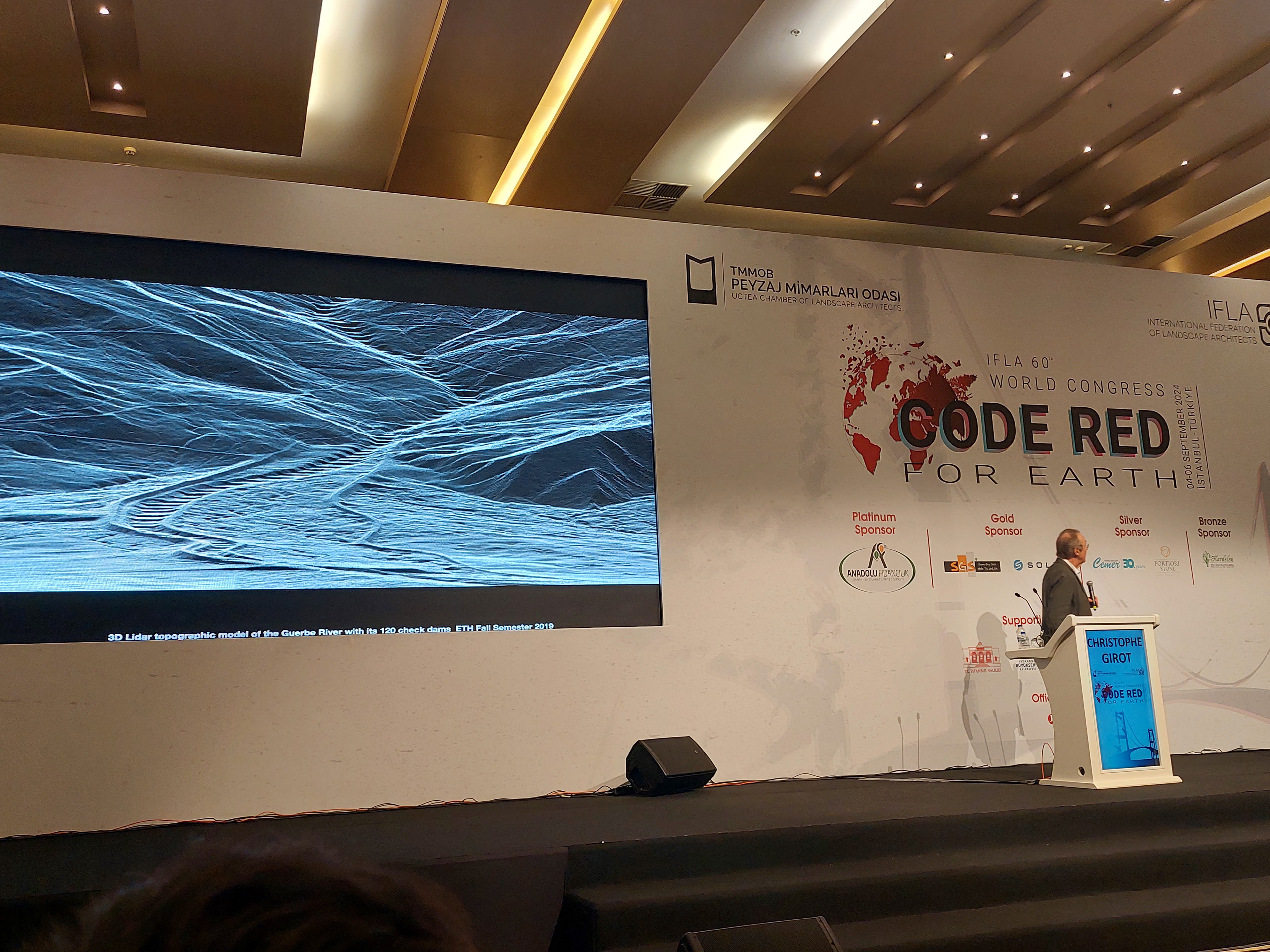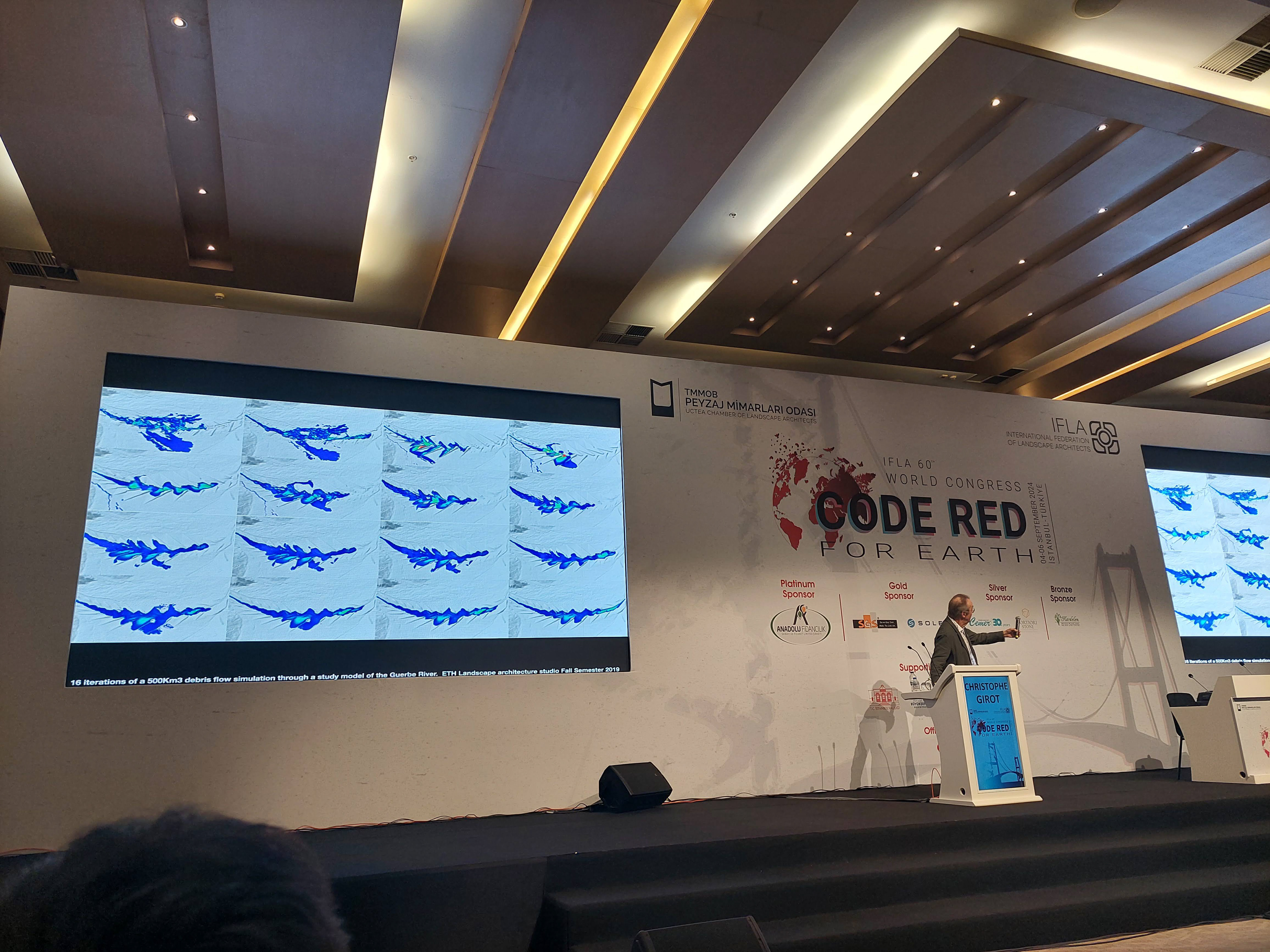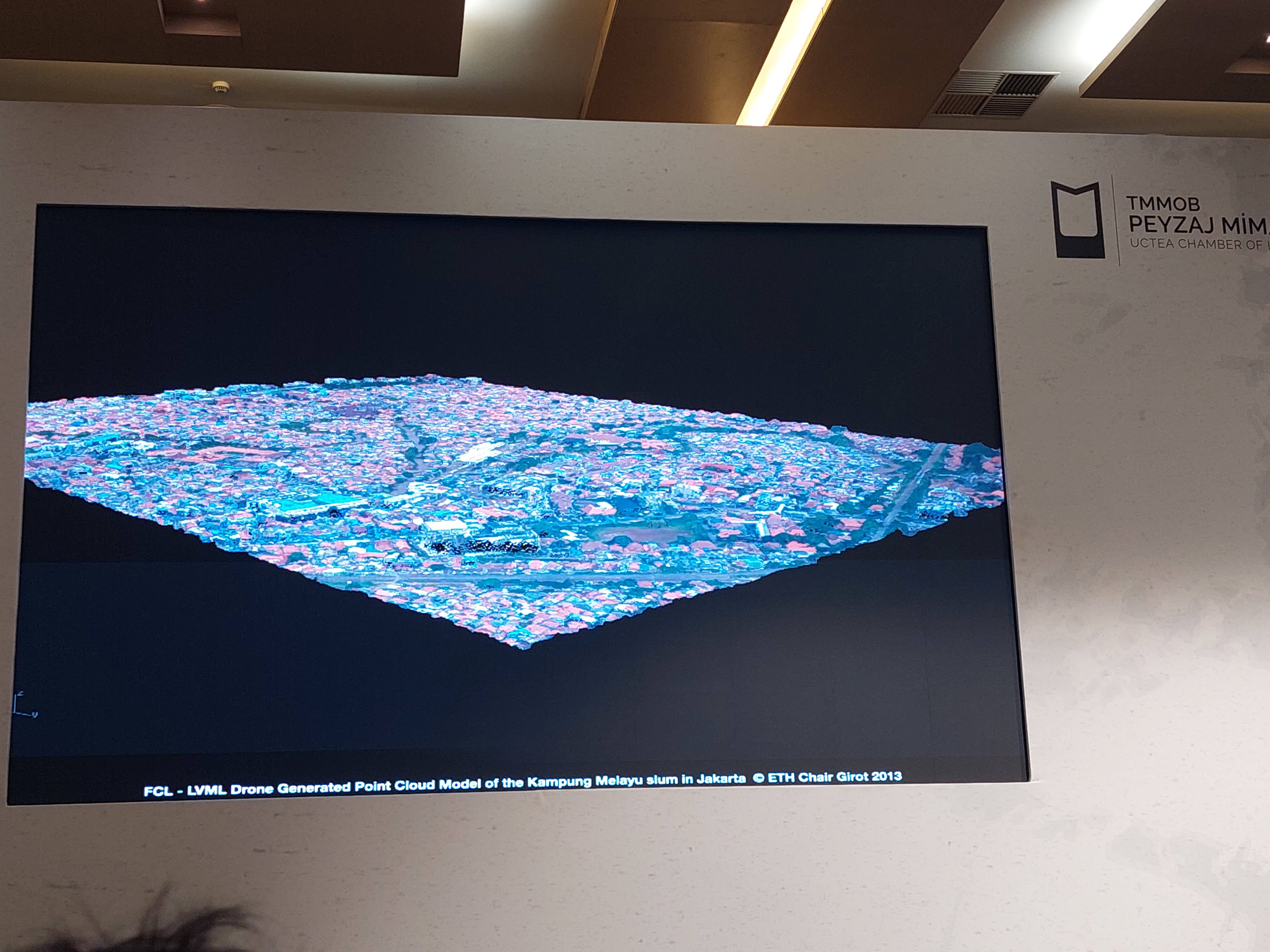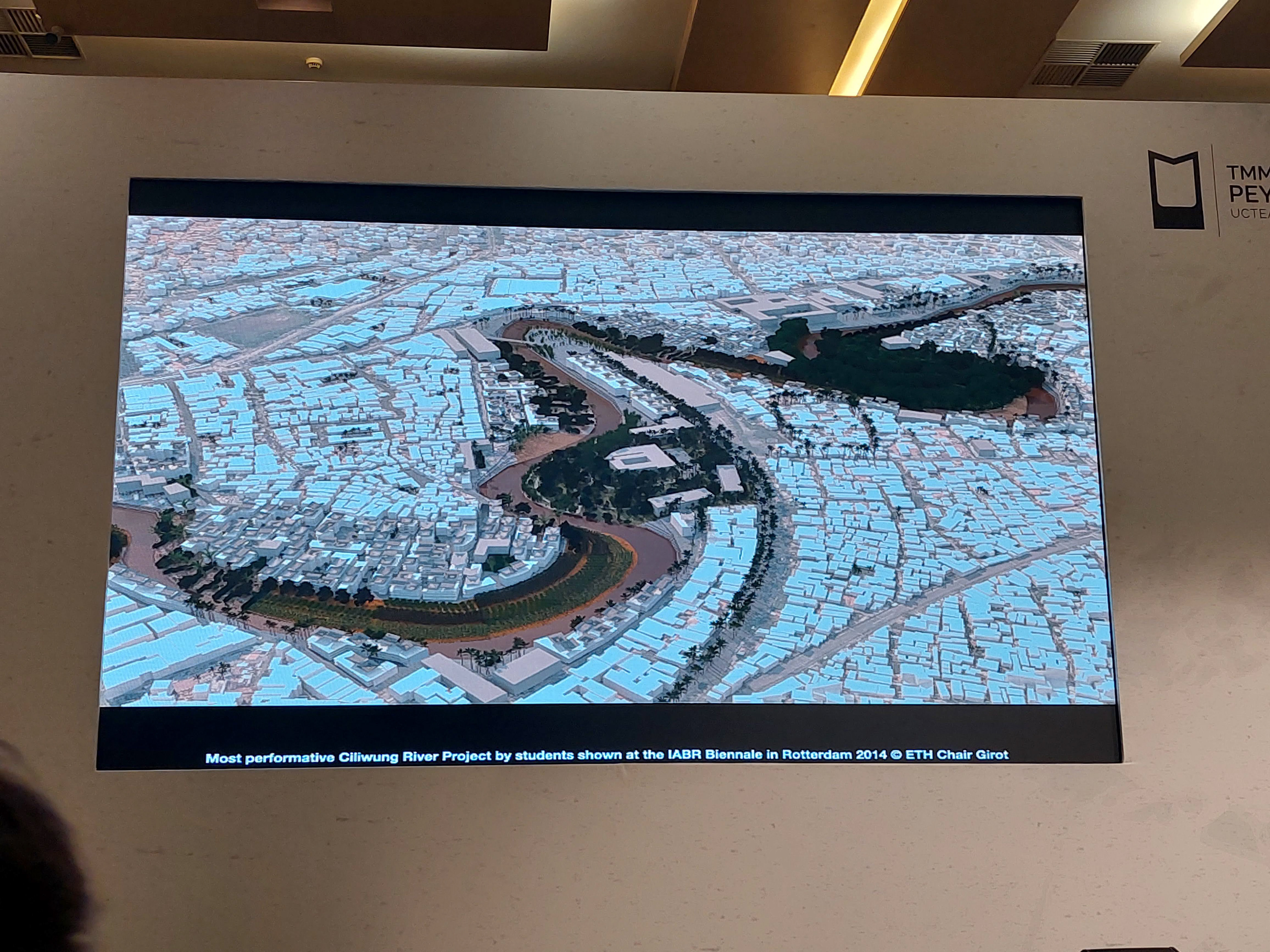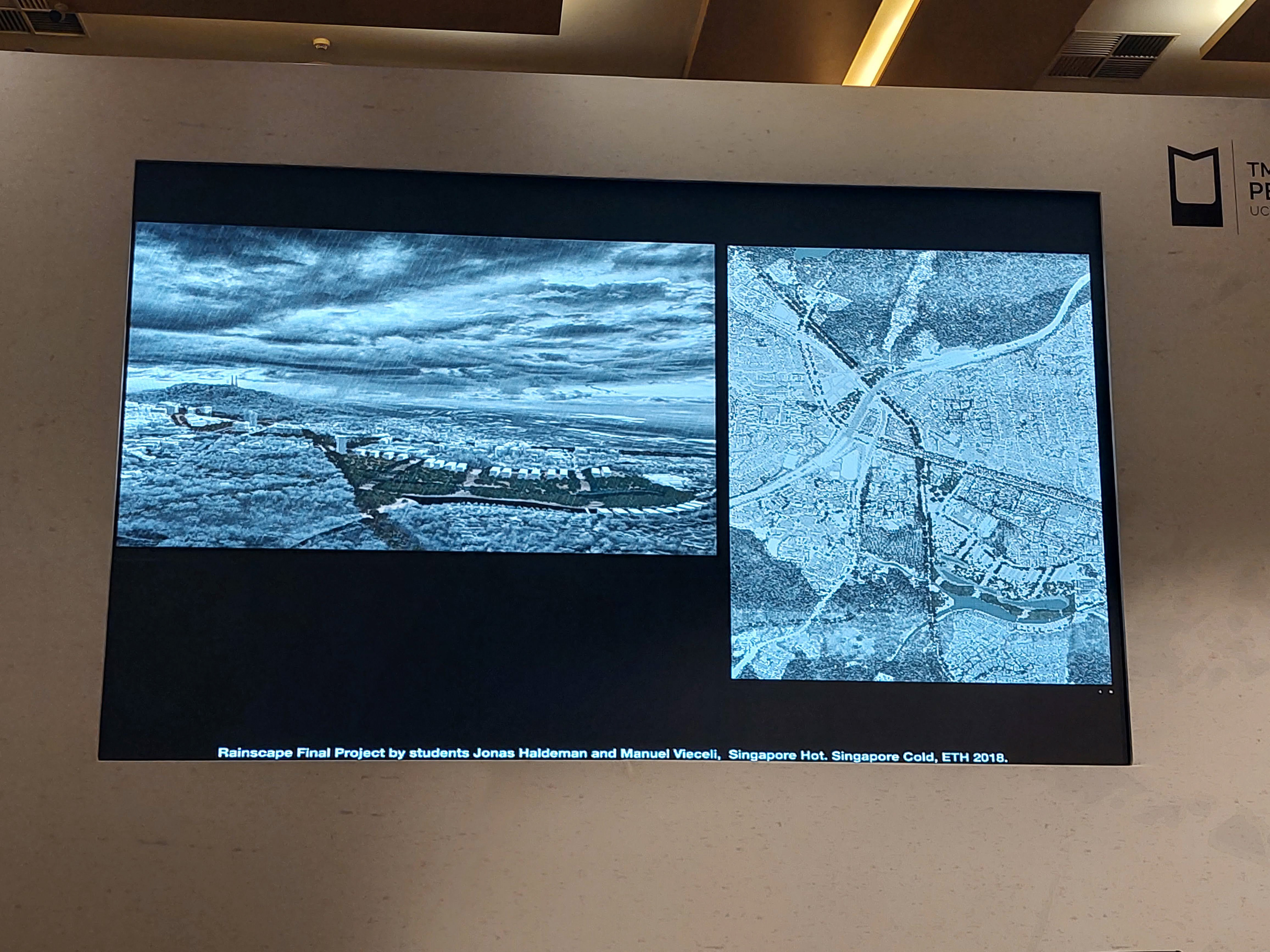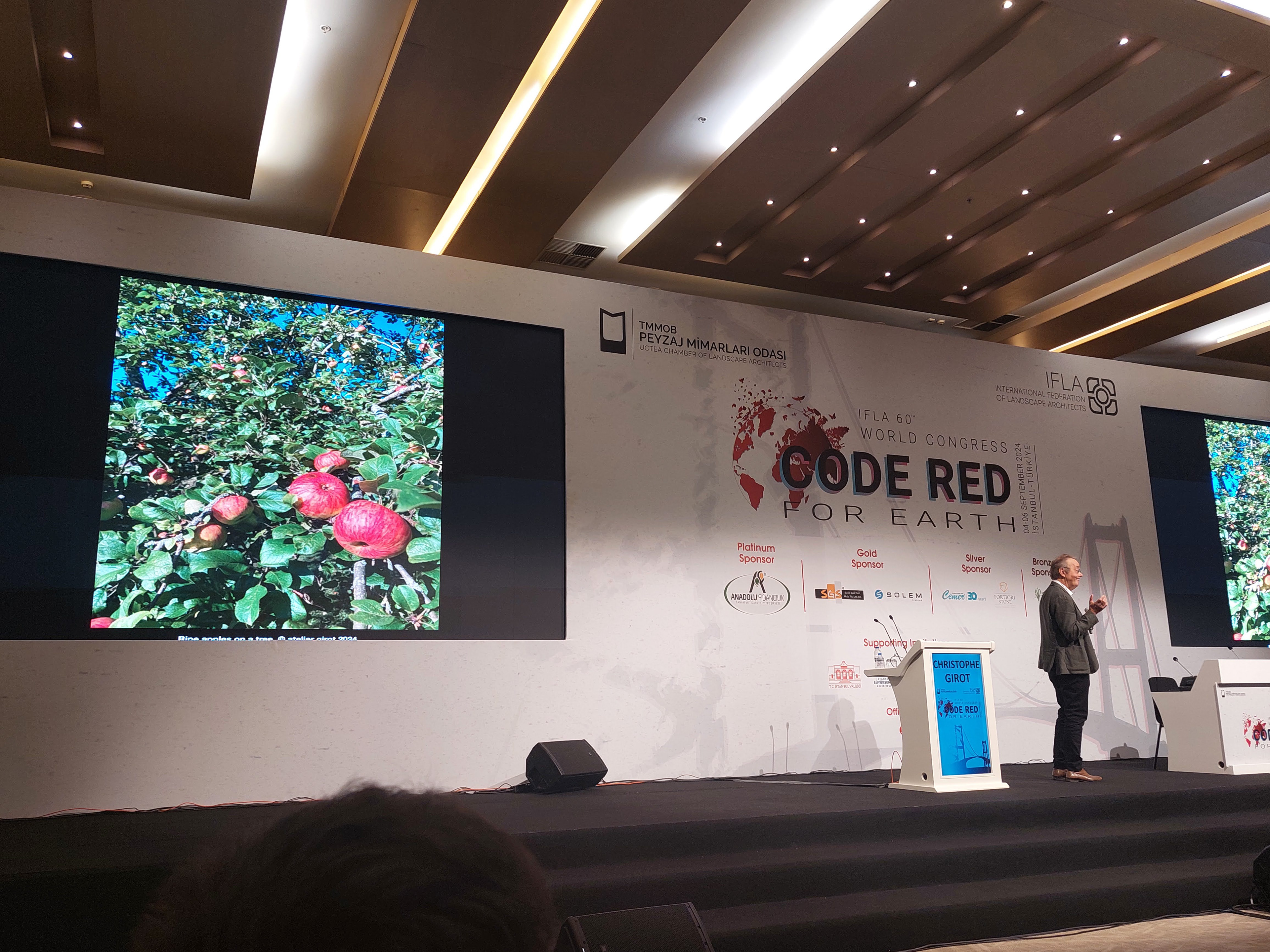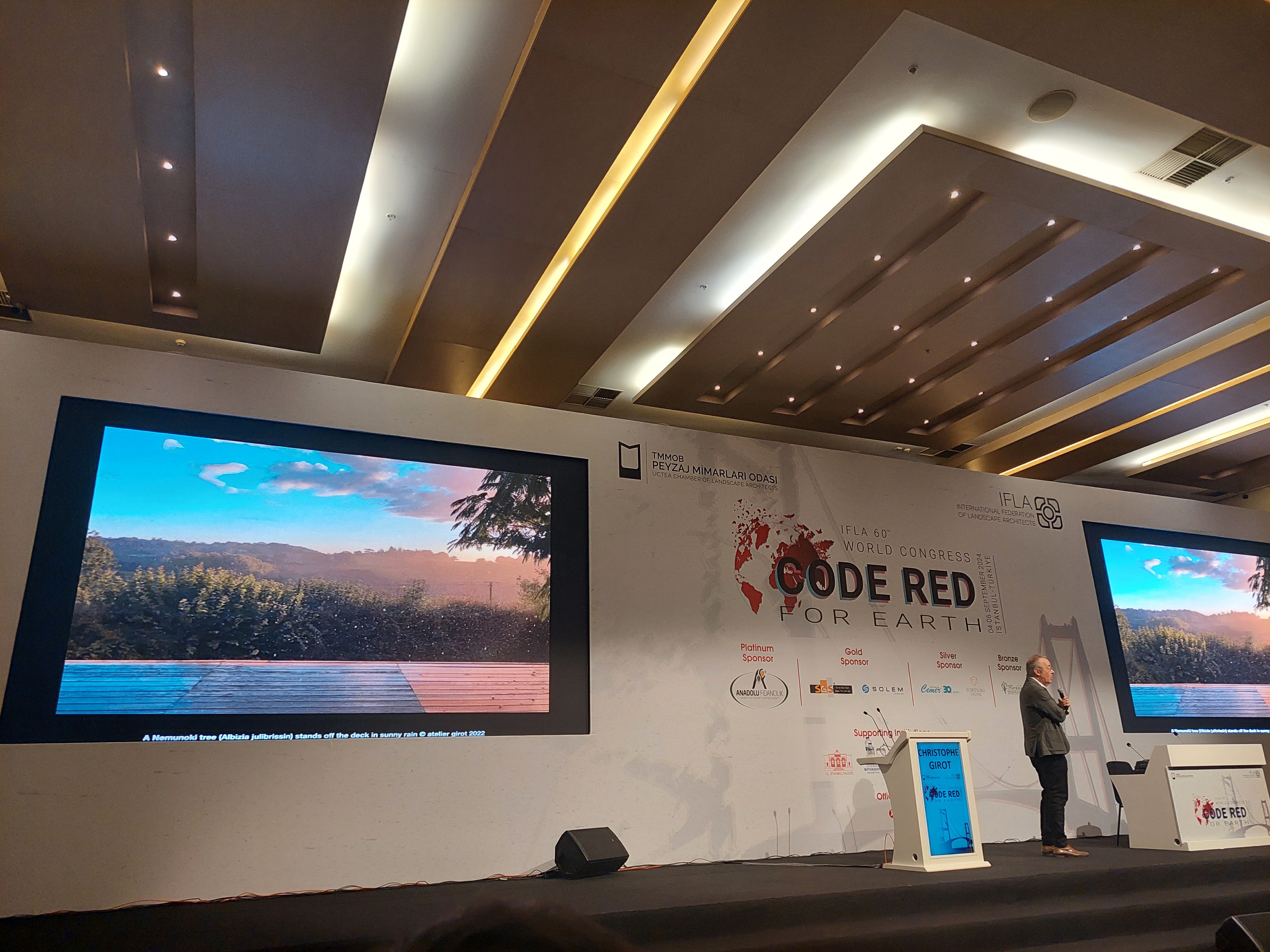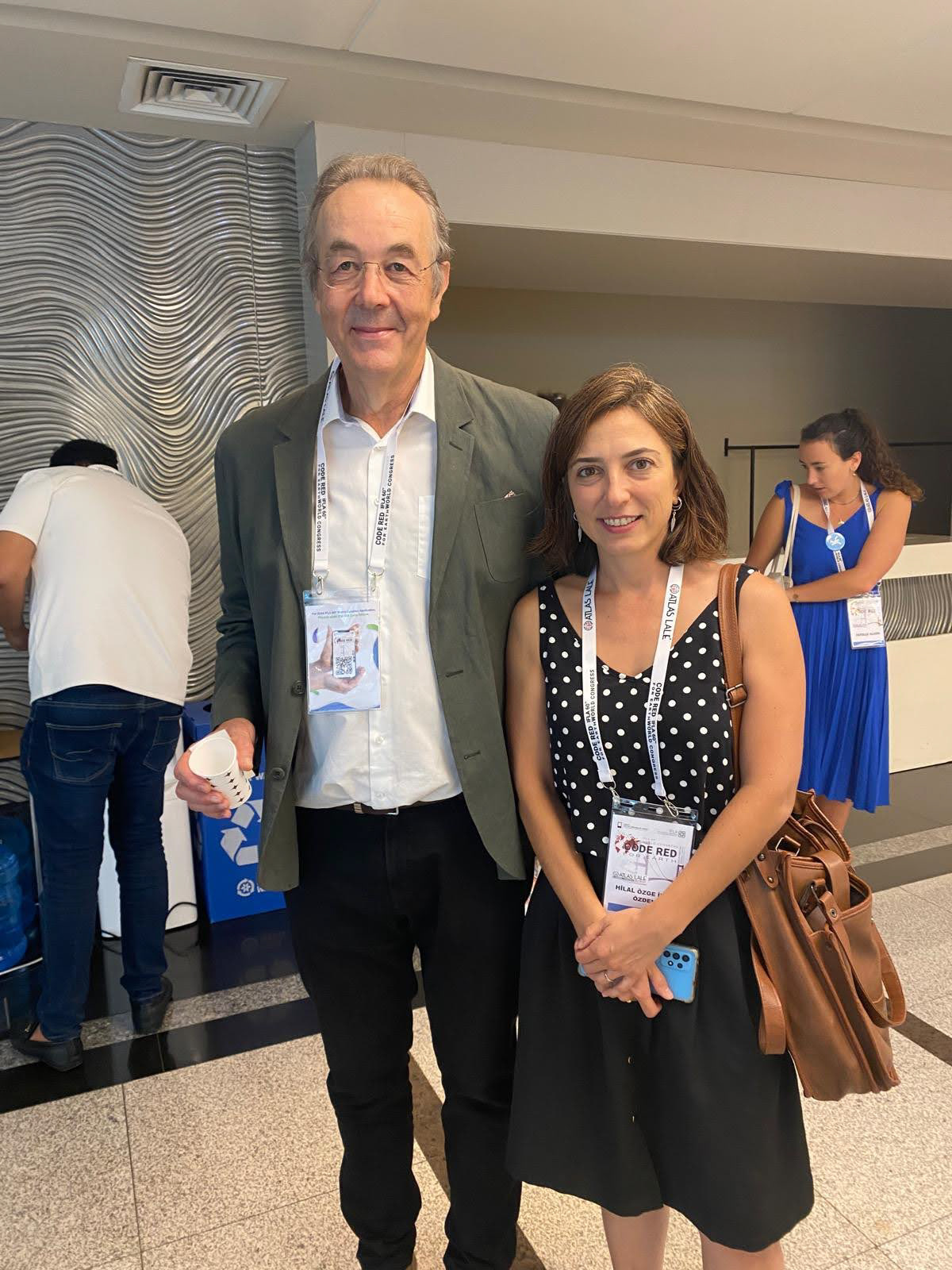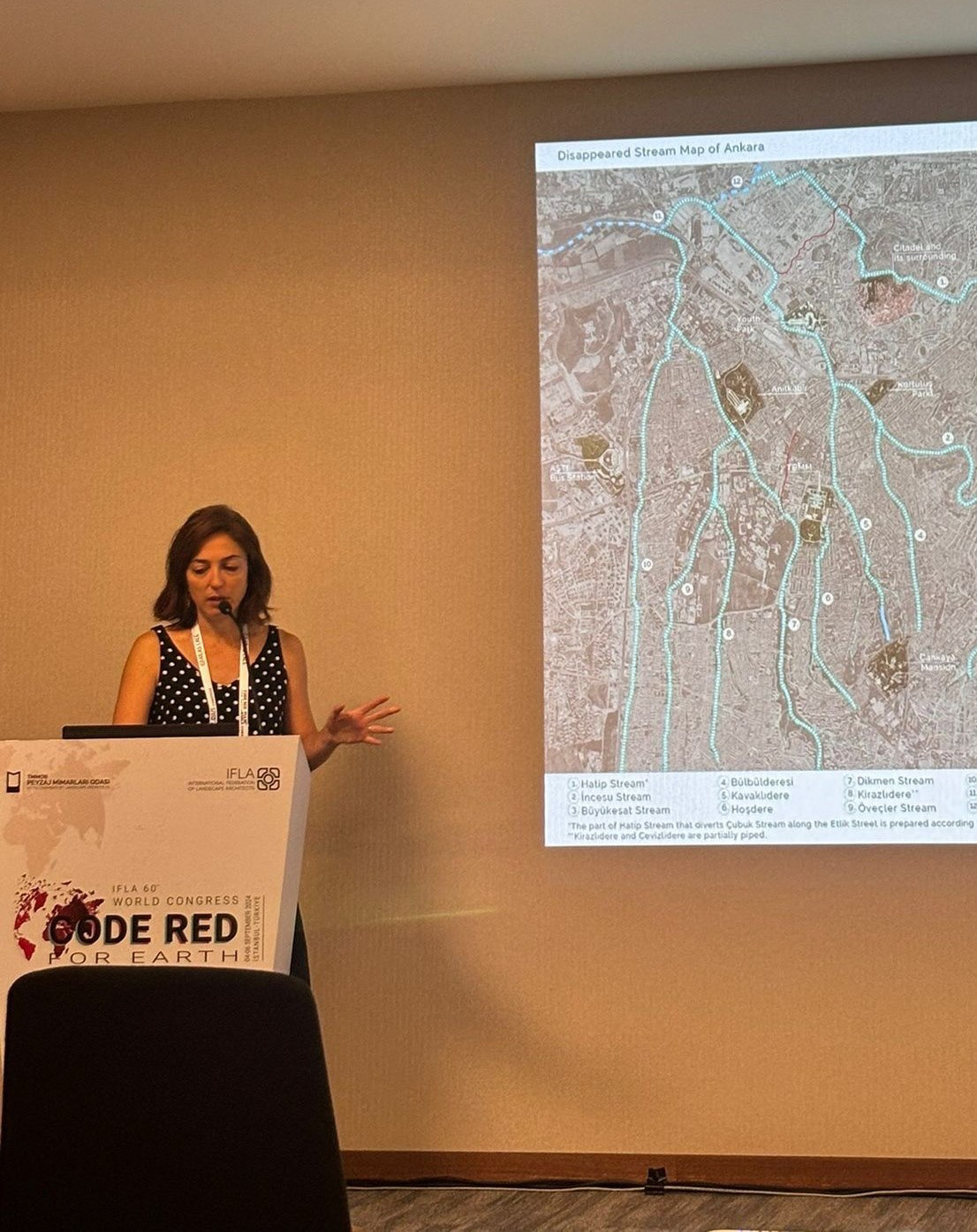The 60th IFLA World Congress, where I also have a presentation, began today, and I had the pleasure of attending an inspiring presentation by Kotchakorn Voraakhom . Despite the differences in climate and geography between Thailand and Turkey, we face similar challenges, such as vast parking areas, flooding, and rigid governmental policies.
In her presentation, Kotchakorn highlighted several key points:
- The lack of connection between buildings and transportation leads to traffic congestion.
- The crucial role of urban street design.
- The importance of water-based development.
- The vital role of canals in fostering resilience in Bangkok.
She emphasized that when engineers are solely responsible for designing coastal areas, the results (as shown in photo 9) are often uninviting, deterring people from coming to the sea. In closing, she posed a thought-provoking question: Why don't we invest in nature-based solutions instead of battling floods with increasingly "stronger" concrete?
I think the answer involves many actors, what do you think!
In her presentation, Kotchakorn highlighted several key points:
- The lack of connection between buildings and transportation leads to traffic congestion.
- The crucial role of urban street design.
- The importance of water-based development.
- The vital role of canals in fostering resilience in Bangkok.
She emphasized that when engineers are solely responsible for designing coastal areas, the results (as shown in photo 9) are often uninviting, deterring people from coming to the sea. In closing, she posed a thought-provoking question: Why don't we invest in nature-based solutions instead of battling floods with increasingly "stronger" concrete?
I think the answer involves many actors, what do you think!
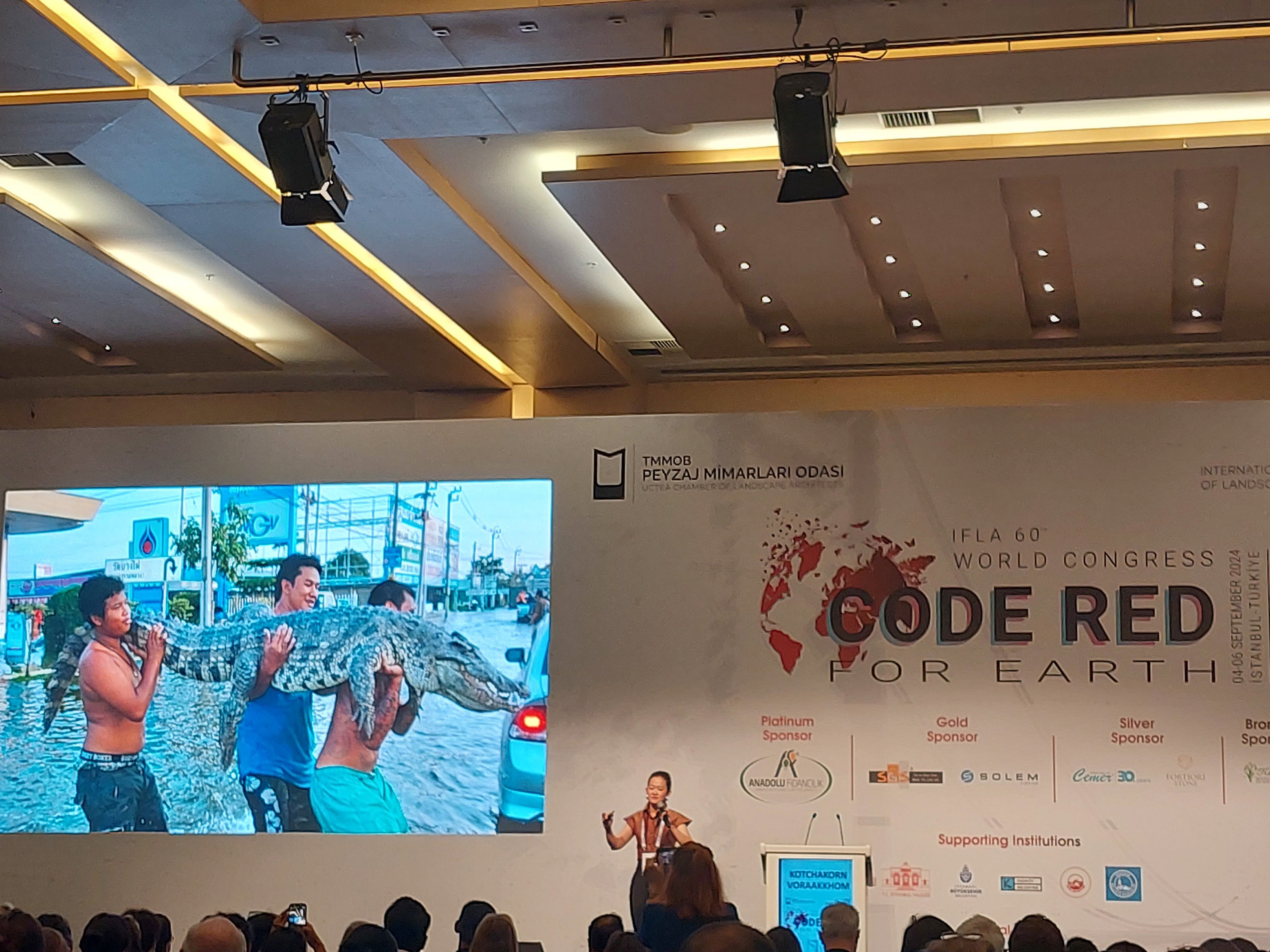

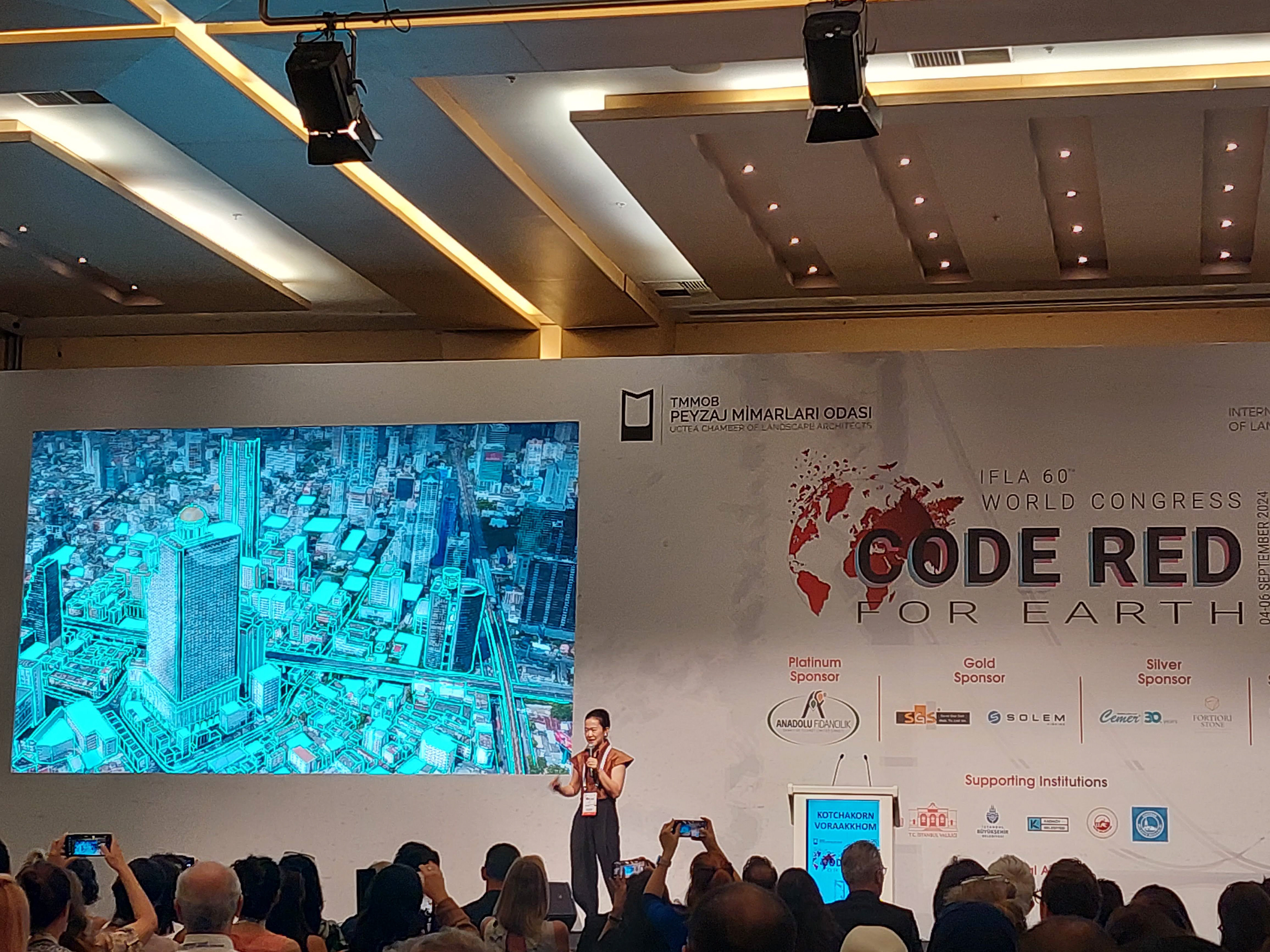
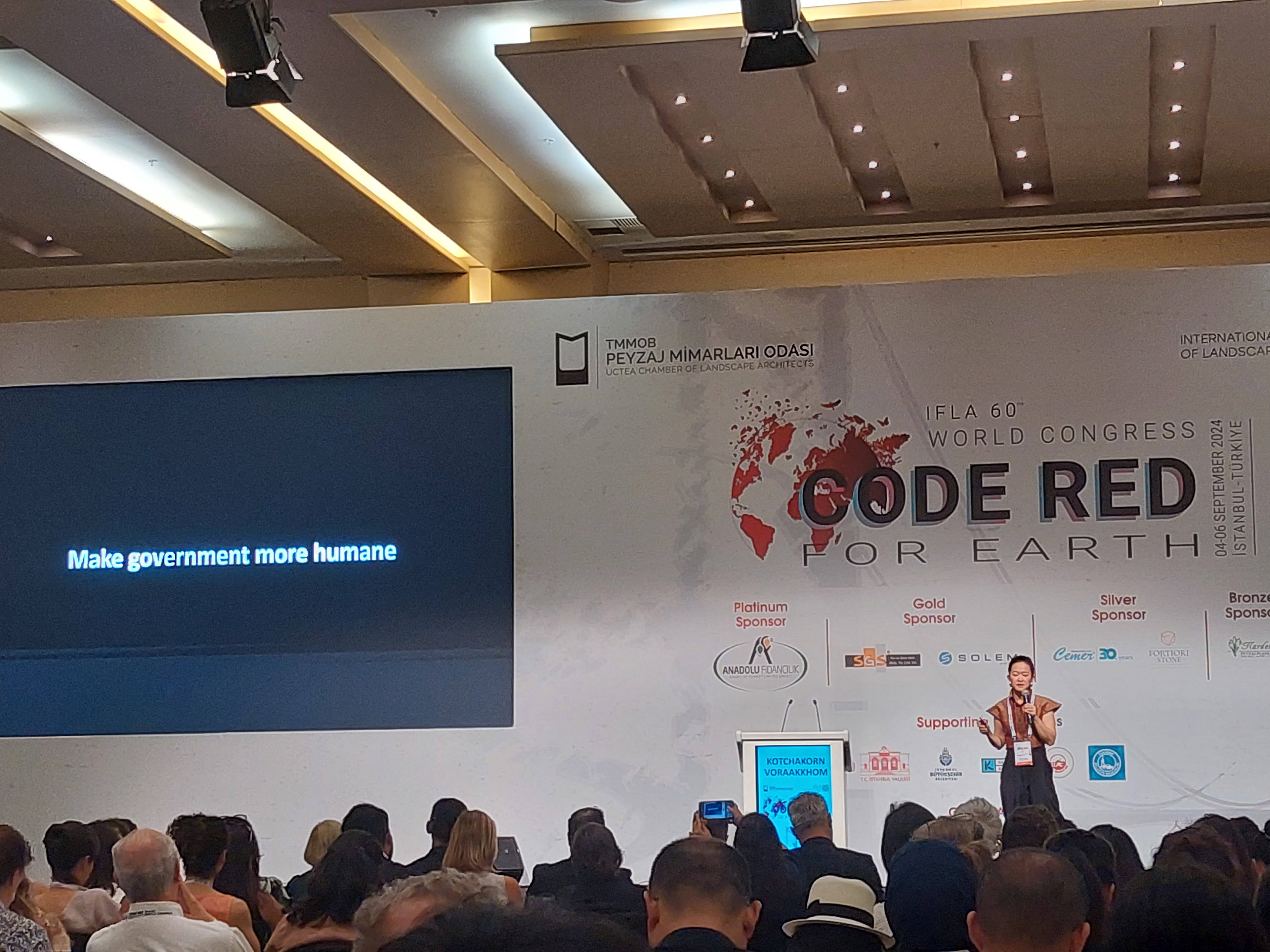
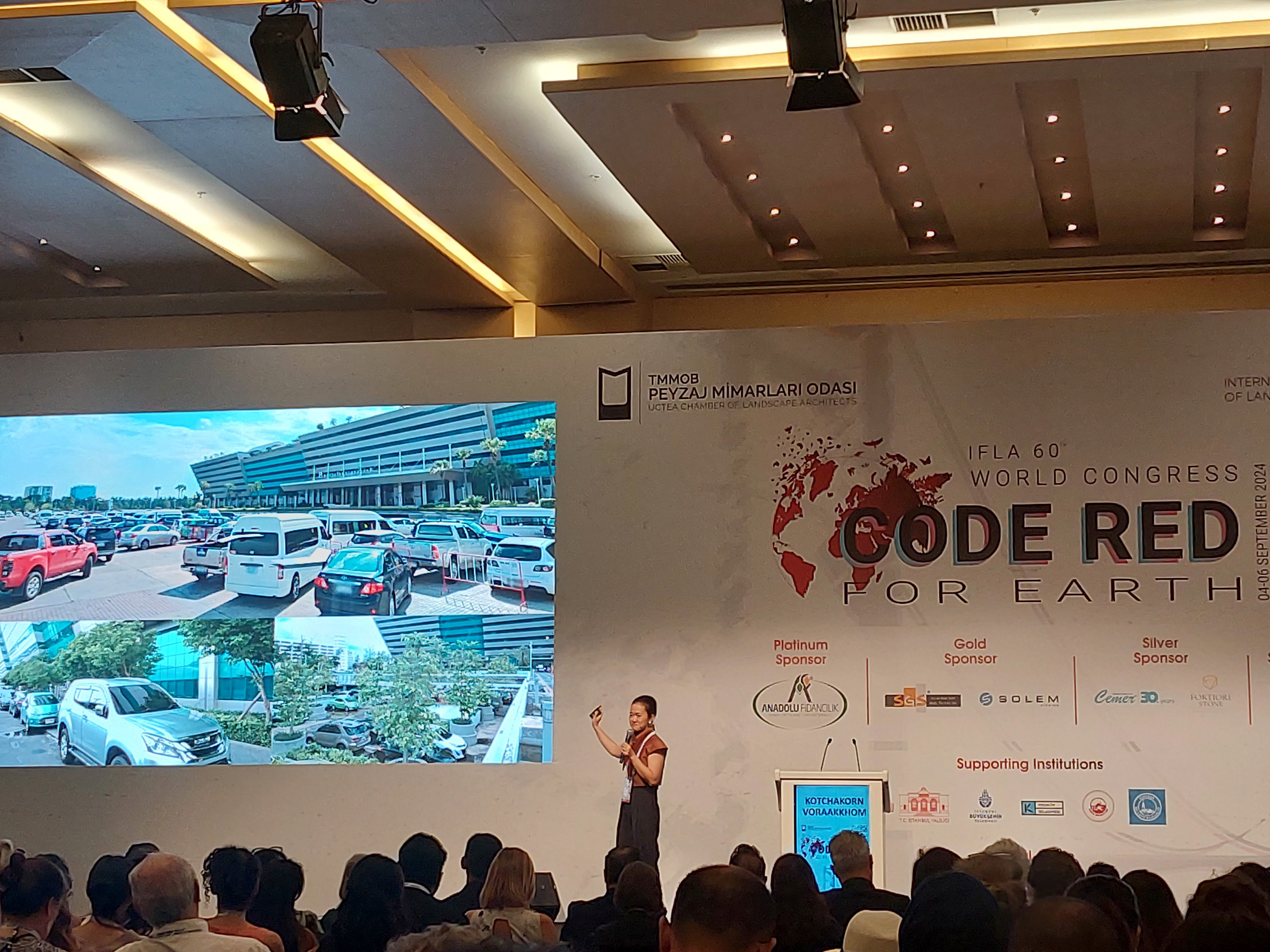
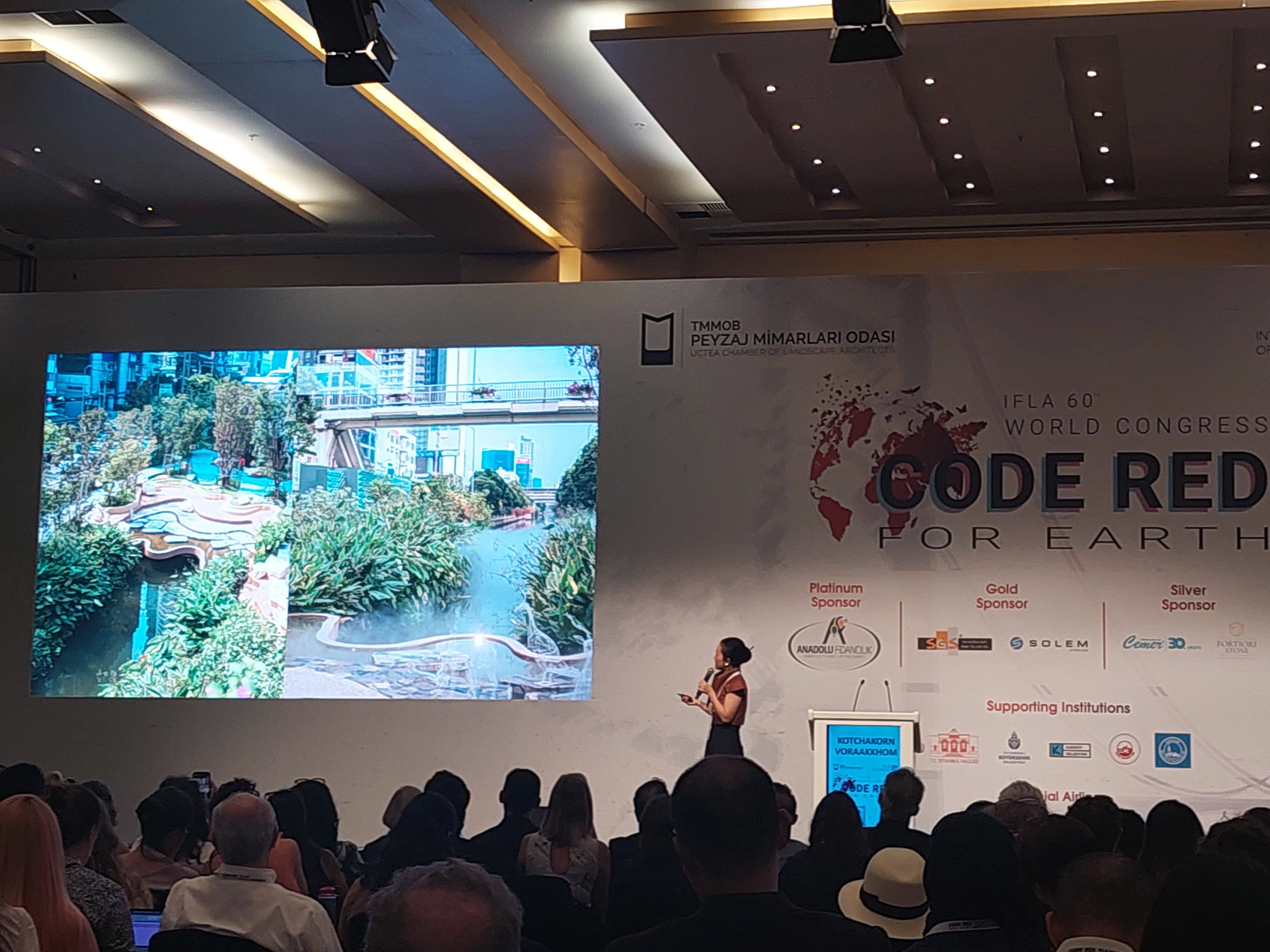
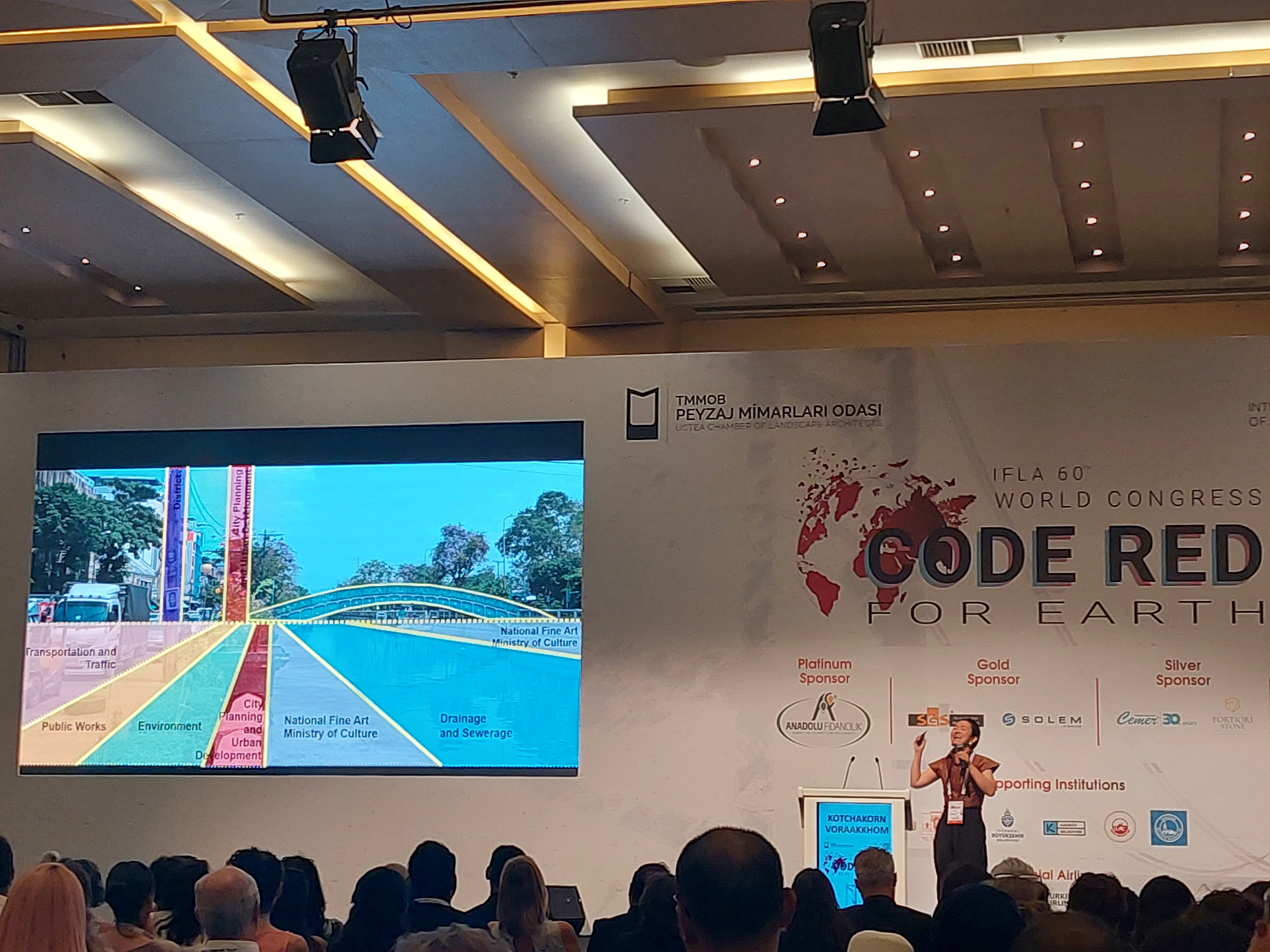
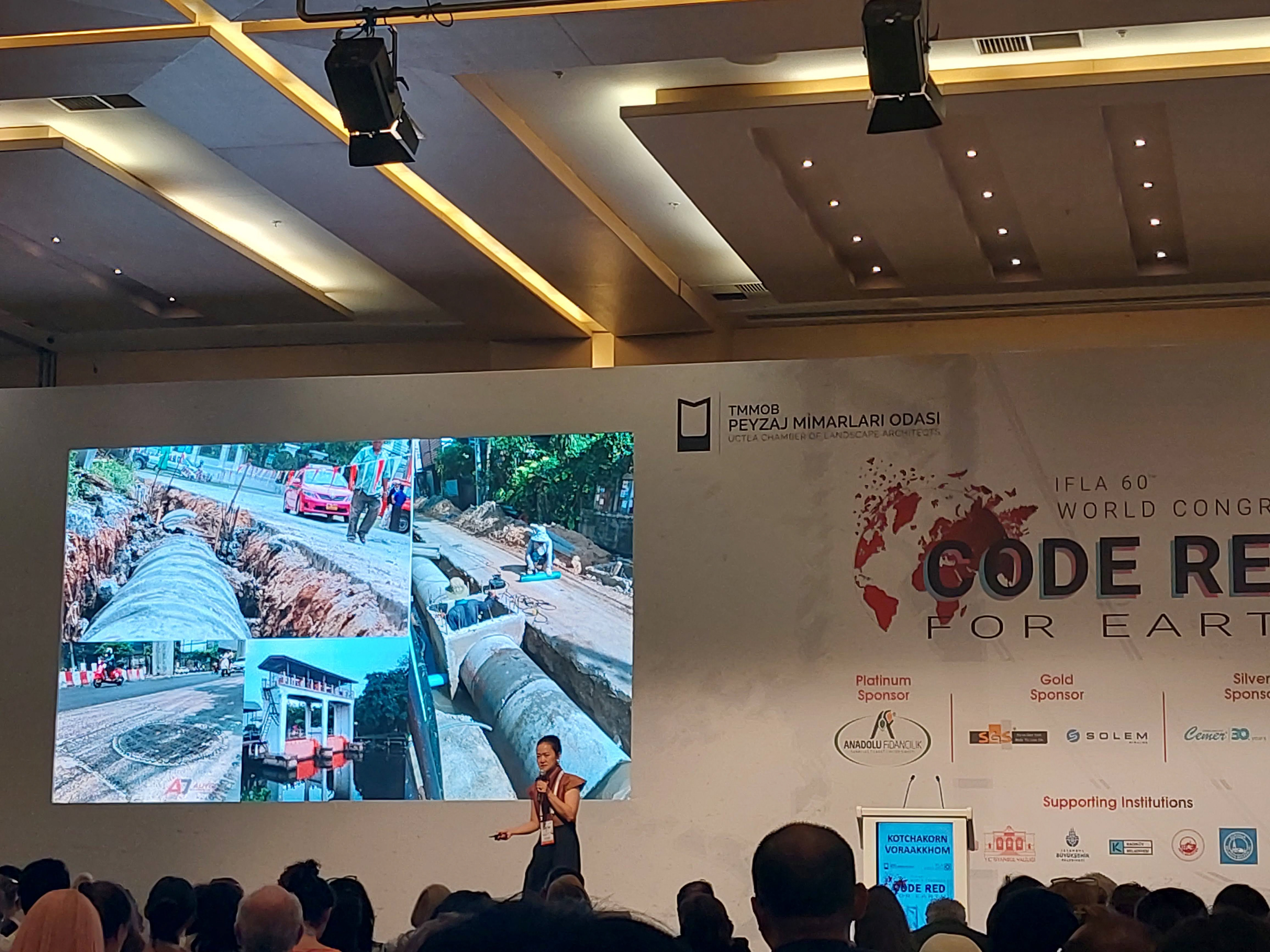
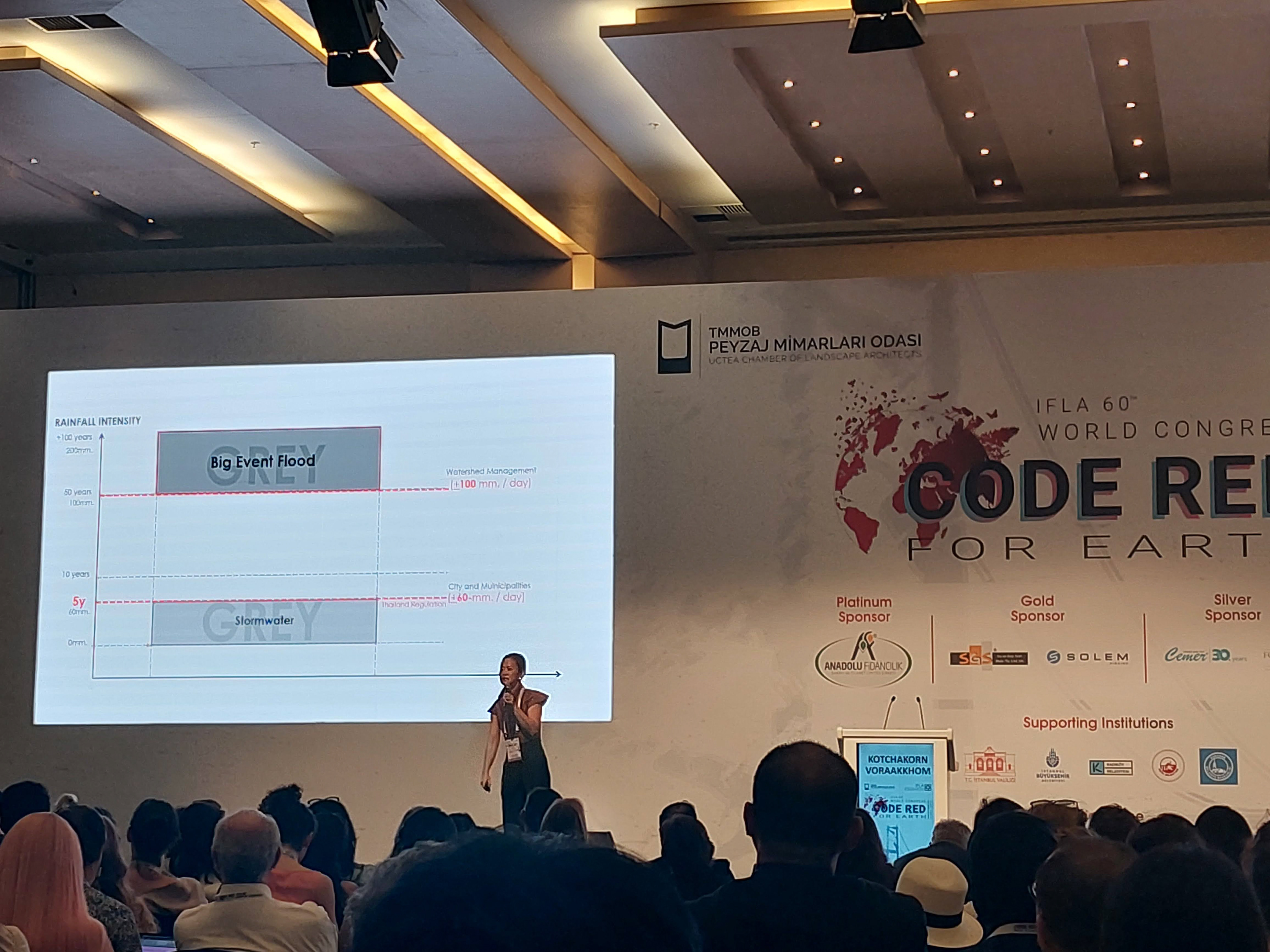
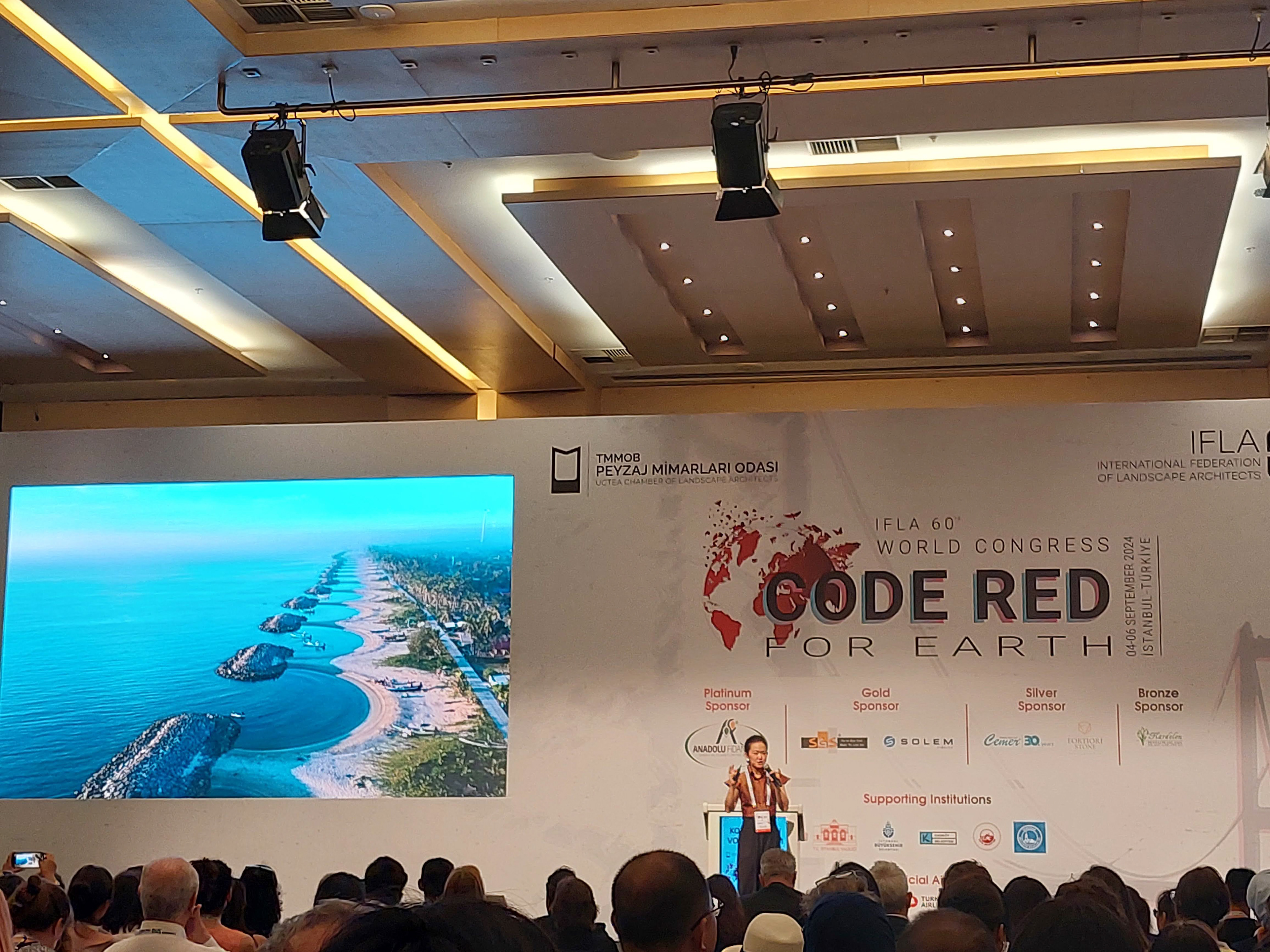
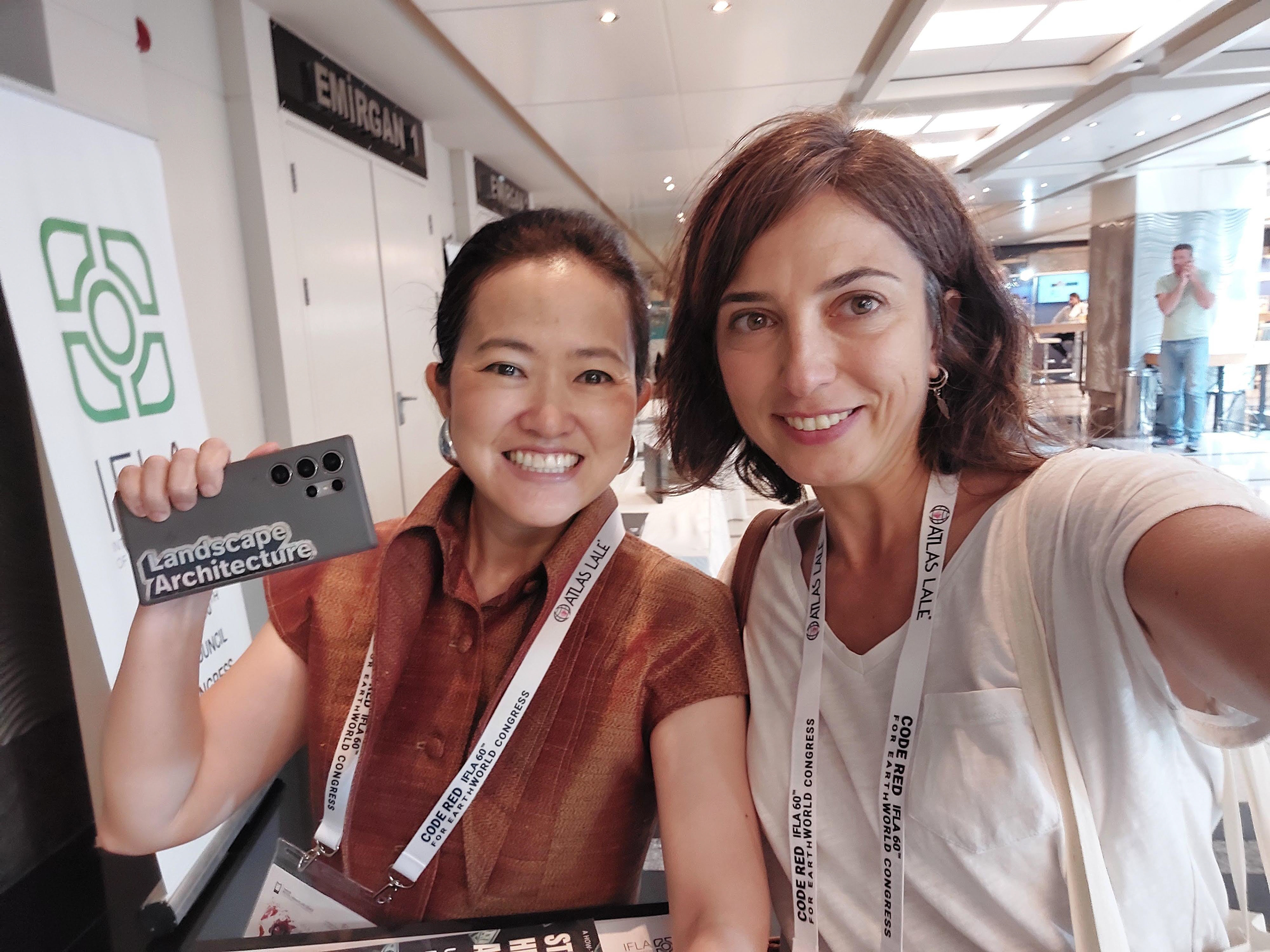
After listening to inspiring academic and practitioner presentations and sharing my research on "Stream Daylighting for a Sustainable Urban Infrastructure" at the 60th IFLA World Congress in Istanbul, I'm back at work, brimming with new ideas and reflections on my profession. I've just found time to share some key insights.
One of the standout presentations for me was by Professor Christophe Girot, who highlighted the often-overlooked importance of planting in landscape architecture. The plants we choose—whether it's an olive tree in Zurich or a palm in Milan—can have far-reaching impacts on the environment, more than we often realize. For instance, in the Aegean region of Turkey, the increase in forest fires has been linked to the shift away from native trees towards the extensive planting of Pinus pinea.
While form and hardscape are undoubtedly essential, Girot emphasized the critical role of softscape and large-scale thinking, particularly when it comes to sustainability. To be honest, I realize now that I haven't dedicated enough time and attention to planting design in my own projects sometimes.
Another fascinating presentation was by Peter Veenstra of LOLA Architects, who discussed the inevitable rise of hashtag#AI in design. The comparison between MidJourney-generated designs and Piet Oudolf’s work was eye-opening. Though the integration of AI into our field is a bit unsettling, it undeniably simplifies many processes and opens up new creative possibilities.
All in all, it was a phenomenal event, full of engaging discussions and idea-sharing with colleagues. A big thanks to CTLA, the IFLA committee, and all the participants for making it such an enriching experience.
One of the standout presentations for me was by Professor Christophe Girot, who highlighted the often-overlooked importance of planting in landscape architecture. The plants we choose—whether it's an olive tree in Zurich or a palm in Milan—can have far-reaching impacts on the environment, more than we often realize. For instance, in the Aegean region of Turkey, the increase in forest fires has been linked to the shift away from native trees towards the extensive planting of Pinus pinea.
While form and hardscape are undoubtedly essential, Girot emphasized the critical role of softscape and large-scale thinking, particularly when it comes to sustainability. To be honest, I realize now that I haven't dedicated enough time and attention to planting design in my own projects sometimes.
Another fascinating presentation was by Peter Veenstra of LOLA Architects, who discussed the inevitable rise of hashtag#AI in design. The comparison between MidJourney-generated designs and Piet Oudolf’s work was eye-opening. Though the integration of AI into our field is a bit unsettling, it undeniably simplifies many processes and opens up new creative possibilities.
All in all, it was a phenomenal event, full of engaging discussions and idea-sharing with colleagues. A big thanks to CTLA, the IFLA committee, and all the participants for making it such an enriching experience.
